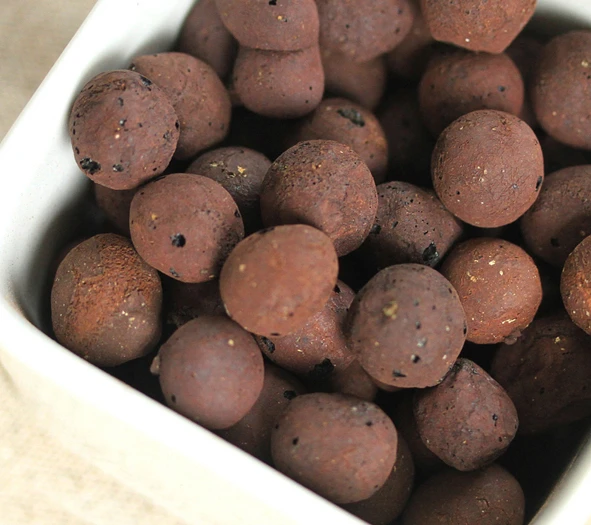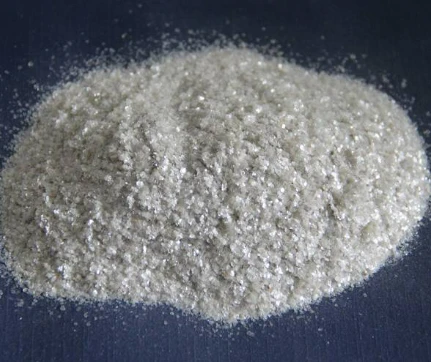Premium Perlite & Vermiculite for Horticulture, Construction & Insulation Bulk Orders
Outline:
- Understanding the Fundamental Properties of Horticultural Minerals
- Performance Comparison: Technical Specifications Revealed
- Leading Supplier Analysis: Production Capacity and Quality Metrics
- Custom Blending Solutions for Industry-Specific Needs
- Practical Implementation Scenarios Across Industries
- Procurement Guide: Sourcing Commercial-Grade Materials
- Advancements in Mineral Applications for Future Markets

(perlite and vermiculite)
Understanding the Fundamental Properties of Perlite and Vermiculite
Both perlite and vermiculite
undergo remarkable physical transformations when heated. Perlite, a volcanic glass, expands up to 20 times its original volume at 1600°F (870°C), creating lightweight clusters with exceptional porosity. Meanwhile, vermiculite's laminar structure expands accordion-style when heated above 570°F (300°C), developing absorbent plate-like particles. These unique structural properties form the foundation for their wide-ranging applications:
- Water retention: Vermiculite absorbs 3-4 times its weight in water
- Aeration capacity: Perlite maintains 30-50% air space in substrates
- Thermal insulation: Both materials significantly reduce heat transfer
The use of perlite and vermiculite spans critical industries from commercial horticulture to fireproofing materials, with 82% of professional growers incorporating both minerals into soil mixes. Their sterility and inert nature eliminate pathogens while delivering essential physical properties that synthetic alternatives struggle to match.
Performance Comparison: Technical Specifications Revealed
When selecting mineral additives, specific technical characteristics determine application suitability. The table below compares key physical properties of horticultural-grade materials:
| Property | Perlite | Vermiculite | Ideal Range |
|---|---|---|---|
| Bulk Density (kg/m³) | 60-120 | 60-130 | 65-100 |
| Water Holding Capacity (%) | 45-50 | 200-240 | Application Dependent |
| pH Level | 7.0-7.5 | 7.0-8.0 | 6.5-7.5 |
| Thermal Conductivity (W/mK) | 0.035-0.045 | 0.052-0.055 | Under 0.06 |
Cation Exchange Capacity (CEC) represents another critical distinction, with vermiculite registering 100-150 meq/100g versus perlite's negligible 1.5-2.0 meq/100g. This difference determines fertilizer retention effectiveness. For hydroponic systems requiring superior drainage, perlite proves irreplaceable. Conversely, vermiculite dominates applications demanding constant moisture availability.
Leading Supplier Analysis: Production Capacity and Quality Metrics
Selecting reliable mineral suppliers requires evaluating operational scale and quality controls. Global production data (2023) reveals significant concentration:
- Top 5 producers control 68% of vermiculite and perlite for sale markets
- Grade variations exist: fine (1-2mm), medium (2-4mm), coarse (4-8mm)
- Premium suppliers maintain ISO 9001 certification and provide material safety data sheets
The perlite and vermiculite factory operations utilize specialized furnaces with proprietary expansion technologies. Production facility assessments should verify batch consistency testing protocols and expansion ratio standardization. Industrial-grade operations typically maintain capacities exceeding 50,000 metric tons annually, while agricultural specialists focus on precise particle distribution. Trace mineral content documentation remains essential for sensitive applications like organic farming.
Custom Blending Solutions for Industry-Specific Needs
Advanced material formulations address unique performance requirements across sectors. Commercial grow operations achieve optimal results through tailored combinations:
- Hydroponic blends: 70% perlite/30% vermiculite ratios provide balanced aeration/moisture
- Construction composites: Fire-rated plaster mixtures incorporate expanded vermiculite
- Specialized packaging: Absorbent perlite layers protect pharmaceutical shipments
Industrial applications increasingly demand calibrated particle distribution verified by laser diffraction analysis. A notable automotive supplier reduced sound transmission by 12dB using custom-engineered mineral insulation layers. The use of perlite and vermiculite in sustainable building materials continues growing at 9.7% CAGR, with novel applications emerging in vertical farming substrates and lithium battery insulation.
Practical Implementation Scenarios Across Industries
Commercial implementations demonstrate the functional impact of mineral additives. These documented applications highlight performance advantages:
Case Study 1 - Precision Agriculture
A California greenhouse operation achieved 34% higher tomato yields using custom substrate containing perlite and vermiculite (40:60 ratio). The optimized media maintained root zone oxygen levels above 18% during peak growth stages.
Case Study 2 - High-Temperature Insulation
Industrial boiler manufacturers integrated vermiculite panels, sustaining structural integrity at 2000°F (1093°C). This solution outperformed ceramic alternatives with 30% weight reduction while meeting ASTM C-610 thermal stability requirements.
Case Study 3 - Waste Remediation
Environmental engineers combined surface-modified perlite with activated carbon to adsorb petroleum contaminants. Field tests showed 98% removal efficiency from groundwater—significantly outperforming polymer alternatives.
Procurement Guide: Sourcing Commercial-Grade Materials
Securing quality minerals requires technical evaluation parameters beyond standard pricing. These purchasing considerations ensure optimal performance:
- Verify expansion ratios: Commercial perlite should expand 8-12× original volume
- Request soluble salt content documentation (target below 1.5 mmhos/cm)
- Assess particle durability through standardized crush testing
- Confirm packaging integrity for moisture-sensitive applications
Bulk purchases of vermiculite and perlite for sale typically involve direct negotiations with the perlite and vermiculite factory rather than distributors. Leading processors offer technical consultations to match mineral specifications to application requirements. Transportation economics favor regional sourcing, with 300-mile distribution radii representing optimal logistics costs. Most industrial users establish annual supply contracts with guaranteed quality parameters and volume pricing tiers.
Advancements in Perlite and Vermiculite Utilization
Material science innovations continue expanding application horizons for these mineral resources. Surface modification techniques now enhance particle functionality for specialized uses. Hydrophobic perlite variants developed for construction insulation resist water absorption while maintaining R-values up to 3.8 per inch. Research published in Advanced Materials demonstrated organically-modified vermiculite layers as flame retardant additives in composites, achieving UL94 V-0 ratings at lower loadings than traditional fillers.
The future points toward engineered mineral combinations with nanotechnology enhancements. Recent trials integrating nano-coatings on perlite and vermiculite particles boosted filtration efficiency by 220% for industrial wastewater treatment. Agriculture remains the primary market (54% of global consumption), though green construction applications demonstrate the fastest adoption growth at 15.1% annually. As environmental regulations tighten, these naturally-derived minerals meet increasing demand for sustainable material solutions across technical industries.

(perlite and vermiculite)
FAQS on perlite and vermiculite
Q: Where can I buy vermiculite and perlite for gardening?
A: Vermiculite and perlite are sold at gardening centers, online retailers like Amazon or specialized horticultural suppliers. Check product s to ensure quality and certifications for plant use.
Q: How do I contact the perlite and vermiculite factory directly?
A: Visit the factory’s official website for contact details or use B2B platforms like Alibaba. Many factories list sales representatives’ emails or phone numbers for bulk orders.
Q: What are the primary uses of perlite vs. vermiculite?
A: Perlite improves soil drainage and aeration, ideal for succulents. Vermiculite retains water and nutrients, better for seed starting or moisture-loving plants.
Q: Can perlite and vermiculite be used together?
A: Yes! Mixing them balances drainage and moisture retention, perfect for potting mixes. Adjust ratios based on plant needs—e.g., more perlite for cacti.
Q: Are perlite and vermiculite safe for organic gardening?
A: Both are natural minerals, but check for organic certifications. Avoid chemically processed varieties if adhering to strict organic standards.
-
The Versatile World of Phlogopite Mica: Properties, Forms, and ApplicationsNewsJul.14,2025
-
The Versatile Applications of Calcined Mica: From Decoration to Industrial UseNewsJul.14,2025
-
The Role of Muscovite Mica in Industrial Insulation MaterialsNewsJul.14,2025
-
The Benefits of Using Expanded Clay Pebbles in Hydroponics and Soil GardeningNewsJul.14,2025
-
Innovative Applications of Mica Flake in Paints and CoatingsNewsJul.14,2025
-
Gardening Expanded Clay Usage: A Complete GuideNewsJul.14,2025
-
The Use of Natural Mica Powder in Skincare ProductsNewsJun.11,2025








